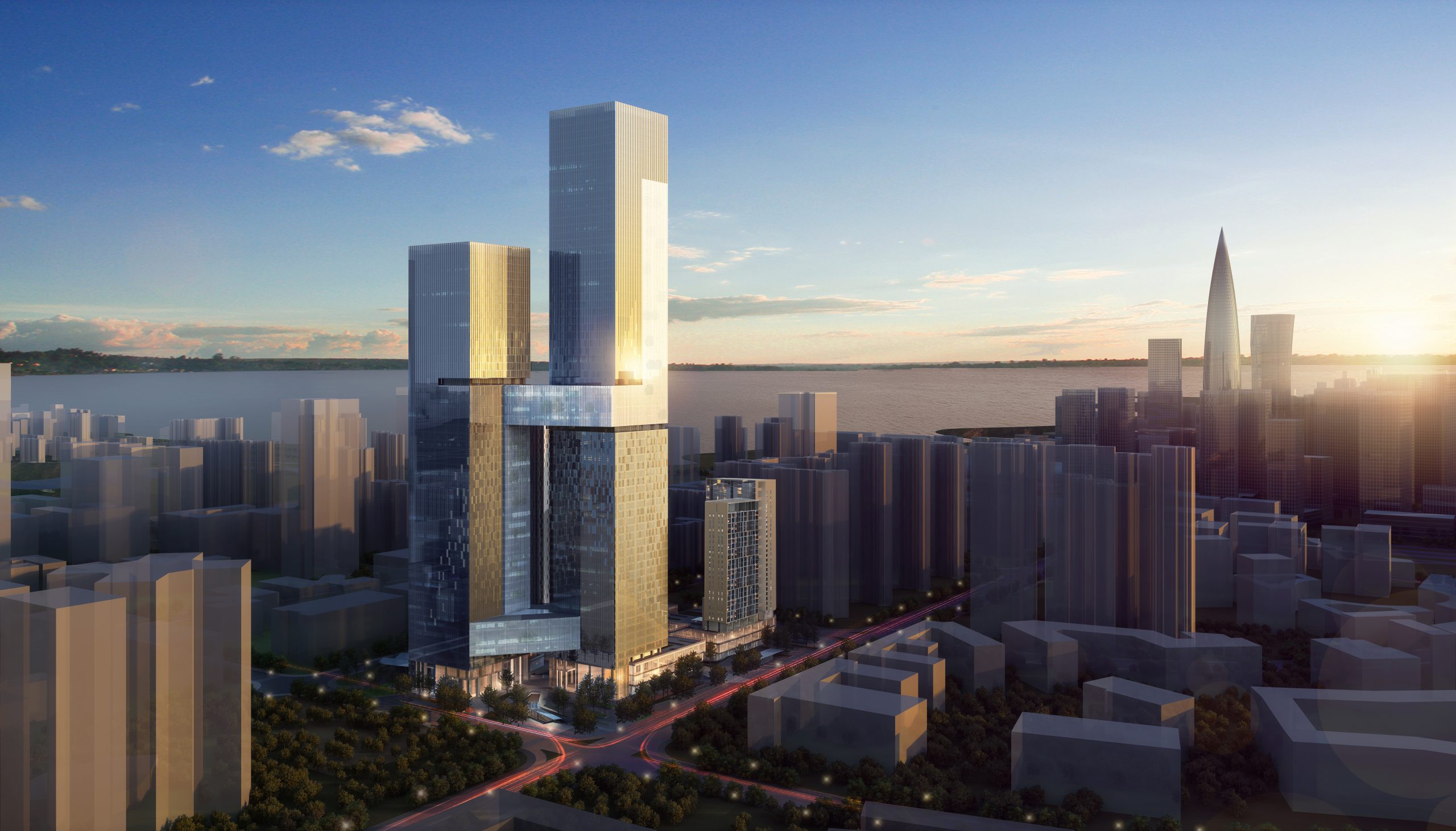Estimated reading time: 4 min
A Conversation with Tean Chee Ko
Chee is the Design Director and Partner at the RMJM RED studio in Hong Kong. He talks about his career, from how it all started to how he came to work at RMJM, and the stunning projects he has worked on.
Please tell us a bit about your career background.
C: I trained in Australia and worked there for 6 years on residential, hospitality and commercial projects throughout Australia, Singapore, Malaysia and Thailand. Shortly after becoming a registered architect, I moved to Shanghai with the Australian firm Hassell. Significantly we won the competition for Alibaba’s headquarters in Hangzhou. I then moved to Hong Kong and joined RMJM and have been here for the last 13 years. We have been running the RMJM RED studio for almost 7 years now with a focus on mixed-use projects in Mainland China.
Had you always wanted to pursue a career in architecture/design?
C: I hadn’t made up my mind about Architecture as a career path until I had to make the formal decision. I was interested in a wide range of fields including Graphic Design, Psychology, Cartography, Science and Engineering. Sitting somewhat on the fence between the Arts and Science, Architecture was a compelling direction.
In my 2nd year at University, I remember being bemused by the structural engineer professor’s opinion of architects. He said that an architect was a “Jack of All Trades and Master of None”. What he deemed to be a weakness of the discipline was for me its greatest draw.
Who/what has been your greatest influence and source of inspiration?
C: Looking back, my father’s broad interests that ranged from the natural world to the arts and sciences shaped my holistic outlook on life and influenced my choice of career and how I live and work. For a conservative personality, he has a strong liberal mindset. Against the trend of the time and setting, he let me choose my career path independently.
Being part of the architectural fraternity and its way of life has been a big part of the story. I’ve certainly been influenced by the well known architectural firms and their work but what is most inspiring is seeing great work produced by lesser-known studios, too many to mention. They have such strength of faith to put everything on the line to push forward for what they believe in.
What has been your most notable project to date?
C: It’s hard to pinpoint a single project so I’ll grant myself three projects and justify each of them. The China Construction Bank Headquarters in Ningbo was a bold proposal as a Brutalist piece of sculpture in a Financial District filled with glass towers, it went against the grain. The Shenzhen Bay Twin Towers was the first major win for the RMJM RED Studio and are about to complete its construction. Having the towers inadvertently catch my eye kilometres away as I crossed the border from Hong Kong to Shenzhen was a surreal moment. The Alibaba Headquarters in Hangzhou was my first project of such scale and significance and it opened my eyes to the disruptive potential that architects have not only to the built environment but to the individual, to a corporate entity and everything around it.
All three of these projects are now built and as with all projects they are the result of a concerted team effort. The fact that some projects become realised whilst others don’t is a testament to the vision and endurance of each individual involved in these projects.
How do you approach your projects?
C: We approach all projects from a blank page with as little preconception as possible. We spend a lot of time getting to know the site, the client and the brief. Then we engage in discussion within the team and with the stakeholders and start to imagine an appropriate response. The process may sound ordered and linear but we’ve found that the strongest outcomes come from a more meandering path and so we let things happen more freely at the early stage. We will have dozens of schemes on the wall to ruminate over. These get refined, culled, short-listed until we have a single scheme that makes the most compelling argument. We enjoy the challenge of the competition process but we prefer the dialogue of formulating a scheme in collaboration with the client.
When a scheme is determined we work hard to navigate the myriad of factors and hurdles that come up during the process and focus on staying on target. We want to preserve the potency of the initial scheme and simply improve upon it, making it more polished.
What do you think is the greatest challenge for designing in sustainability?
C: It’s always a challenge to convince a developer that the effort and capital investment put towards sustainability is worthwhile. Whilst most would agree with the long term benefits of such initiatives many other more immediate priorities sideline sustainability. The greatest motivator in the decision making is the market opinion and what is deemed required and accepted in the market. Factors of speed and cost-effectiveness are still the most dominant drivers and hence the adoption of sustainable initiatives has not been strong.
China’s Green Building Standard, introduced in 2006, is a good system however it is voluntary and there is little incentive to aim for the top three-star rating. I believe that making it mandatory for all residential and public projects over a certain size is possible and by making it mandatory we can bypass the slow uptake of green initiatives by the market.
First published in FC&A Magazine.


